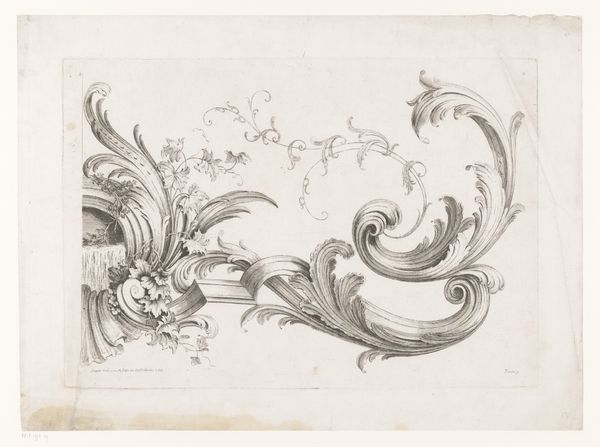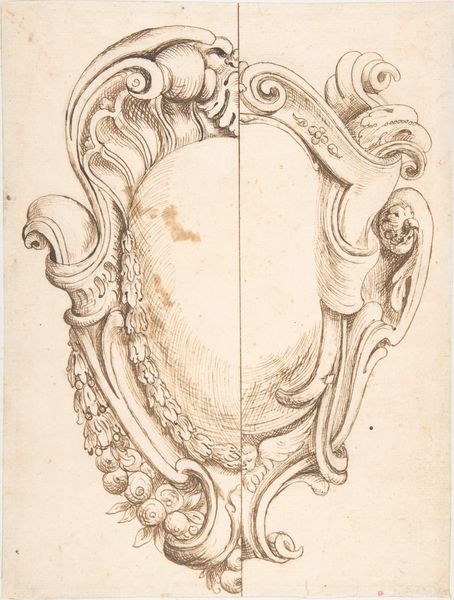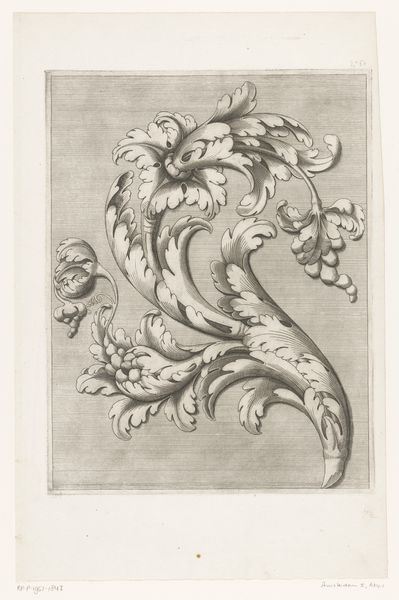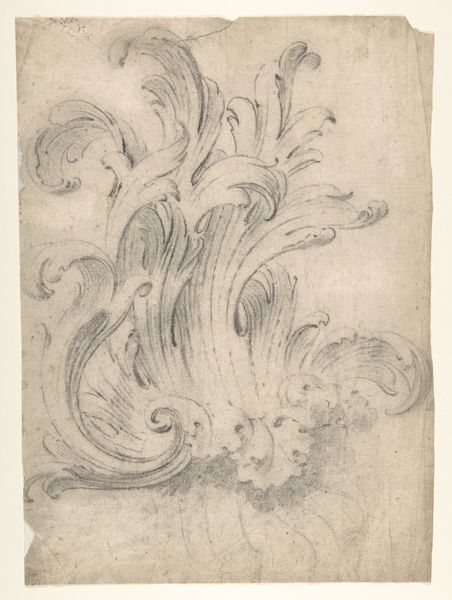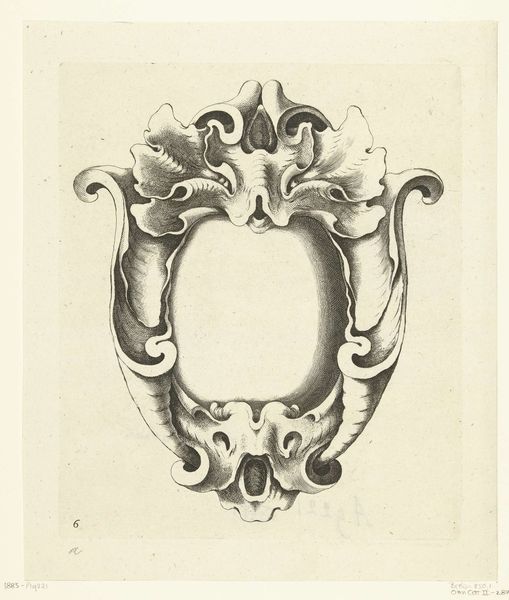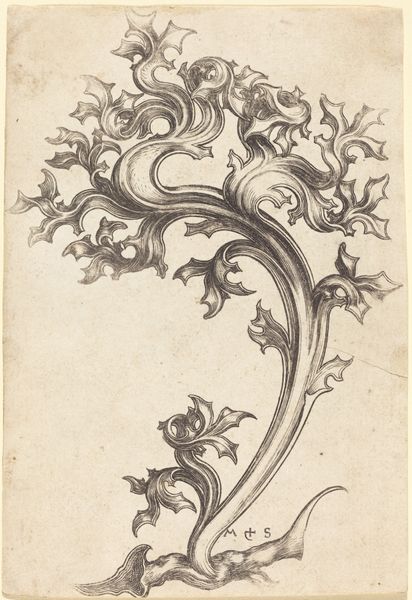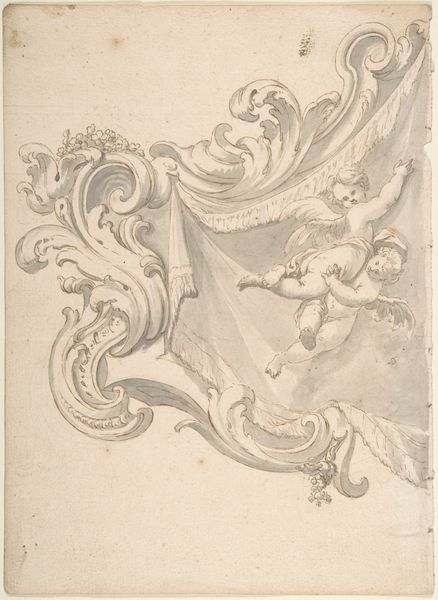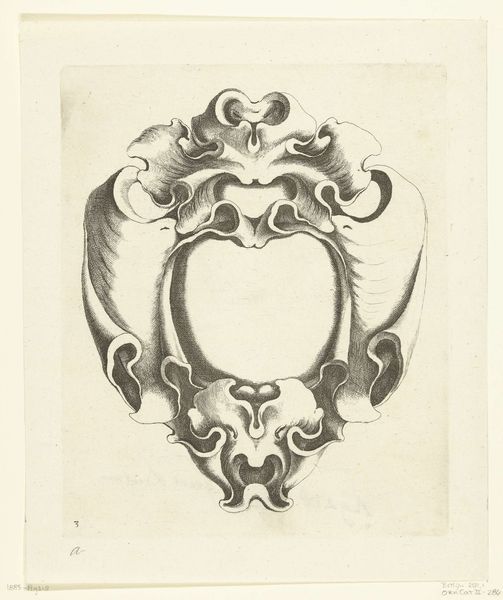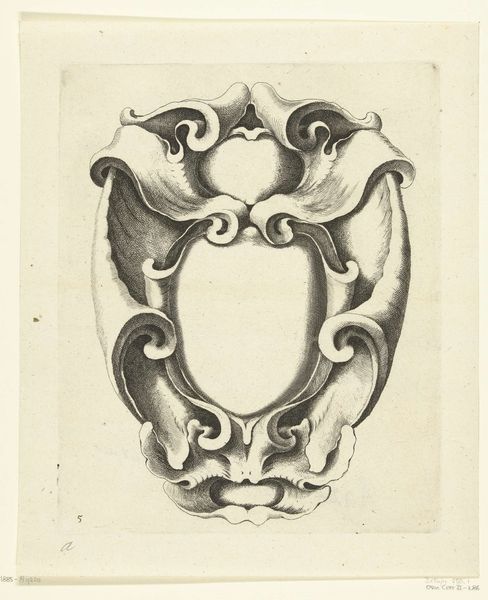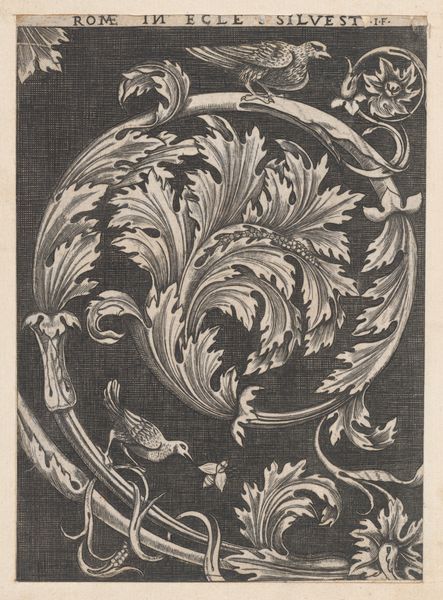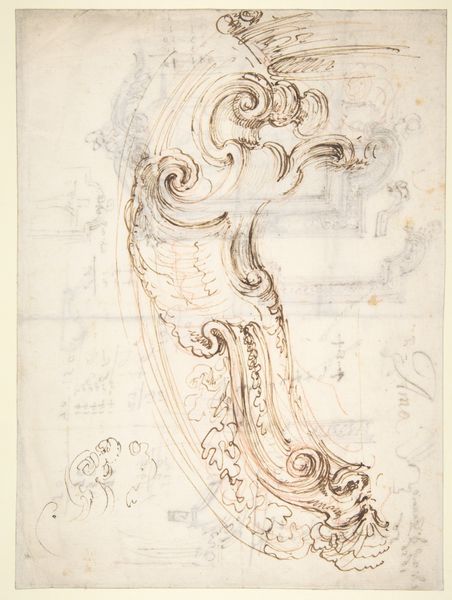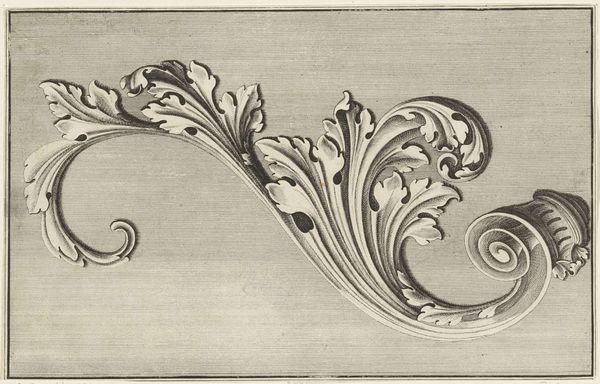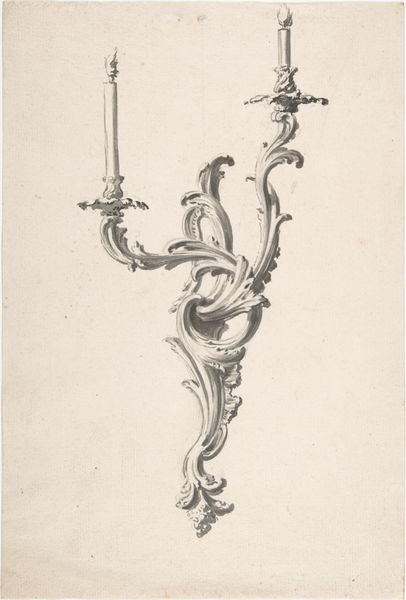
Dimensions: height 337 mm, width 222 mm
Copyright: Rijks Museum: Open Domain
Editor: This pencil drawing, "Rocaille Cartouche," by Gilles Demarteau, dating from 1761 to 1769, showcases an intricate, ornamental form. The curves are so fluid; it’s almost like observing the deliberate choreography of the Baroque and Rococo styles. How would you interpret the enduring appeal of such designs? Curator: This cartouche, and Rococo ornamentation in general, serves as a visual echo of the 18th century’s aspirations. We see a desire for lightness, grace, and an escape from the more rigid formality of the preceding Baroque. Notice the almost calligraphic lines and the asymmetry; they are powerful symbols of a move toward individualism and emotional expression. It almost feels like the form itself is striving for liberation, doesn’t it? Editor: Yes, I definitely see that sense of liberation. The swirls almost feel like they’re about to take flight. How does the symbol of the cartouche itself play into this reading? Curator: The cartouche, traditionally used to hold inscriptions or coats of arms, is here liberated from its textual burden, becoming pure form. It signifies a shift away from inherited authority and toward individual aesthetic sensibility. Consider, too, the psychological effect – the dynamism invites the viewer’s gaze to wander, enacting a feeling of freedom. What does the shading and absence of colour suggest to you? Editor: That’s interesting – I hadn’t thought of it in those terms. The grey shading, devoid of color, almost strips the object from time, focusing it more into the appreciation of form… Curator: Precisely! The lack of colour allows us to engage directly with its abstract qualities, connecting to a deeper symbolic register within our minds. Rococo, often dismissed as frivolous, possesses a surprisingly potent emotional language. Editor: I’ve learned that sometimes what looks ornate actually represents change at its roots. I’ll never look at Rococo the same way! Curator: It’s these overlooked details that reveal the layers of cultural memory embedded in visual forms, isn’t it fascinating?
Comments
No comments
Be the first to comment and join the conversation on the ultimate creative platform.

